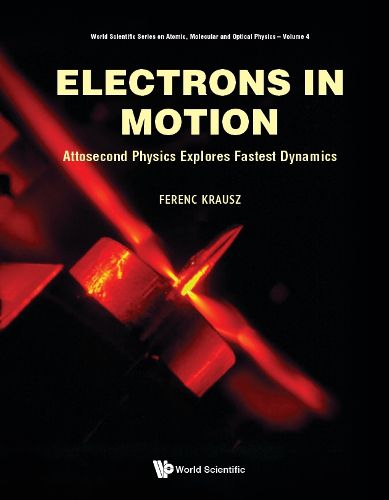Readings Newsletter
Become a Readings Member to make your shopping experience even easier.
Sign in or sign up for free!
You’re not far away from qualifying for FREE standard shipping within Australia
You’ve qualified for FREE standard shipping within Australia
The cart is loading…






Classical electromagnetism allows the rapidity of light field oscillations to be inferred from measurement of the speed and wavelength of light. Quantum mechanics connects the rapidity of electronic motion with the energy spacing of quantum states, accessible by light absorption and emission. These indirect measurements suggest that light as well as electrons vibrate within attoseconds, enabling us - among others - to see the world around us.Electronic motion is the primary step in any change of physical, chemical and biological properties of materials as well as in the functioning of living organisms. The current of electrons underlies all forms of modern signal processing. Observing and controlling these motions in real time may help us to explore the ultimate frontiers of electronics and gain insight into the behavior of materials, function and malfunction of living matter at the most fundamental level: the ‘glue’ of atomic structures.This book is about how attosecond metrology emerged at the dawn of the new millennium to provide real-time access to the fastest motions outside the atomic nucleus and how this very technology is now opening prospects for real-world applications of far-reaching impact.
$9.00 standard shipping within Australia
FREE standard shipping within Australia for orders over $100.00
Express & International shipping calculated at checkout
Classical electromagnetism allows the rapidity of light field oscillations to be inferred from measurement of the speed and wavelength of light. Quantum mechanics connects the rapidity of electronic motion with the energy spacing of quantum states, accessible by light absorption and emission. These indirect measurements suggest that light as well as electrons vibrate within attoseconds, enabling us - among others - to see the world around us.Electronic motion is the primary step in any change of physical, chemical and biological properties of materials as well as in the functioning of living organisms. The current of electrons underlies all forms of modern signal processing. Observing and controlling these motions in real time may help us to explore the ultimate frontiers of electronics and gain insight into the behavior of materials, function and malfunction of living matter at the most fundamental level: the ‘glue’ of atomic structures.This book is about how attosecond metrology emerged at the dawn of the new millennium to provide real-time access to the fastest motions outside the atomic nucleus and how this very technology is now opening prospects for real-world applications of far-reaching impact.